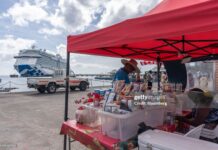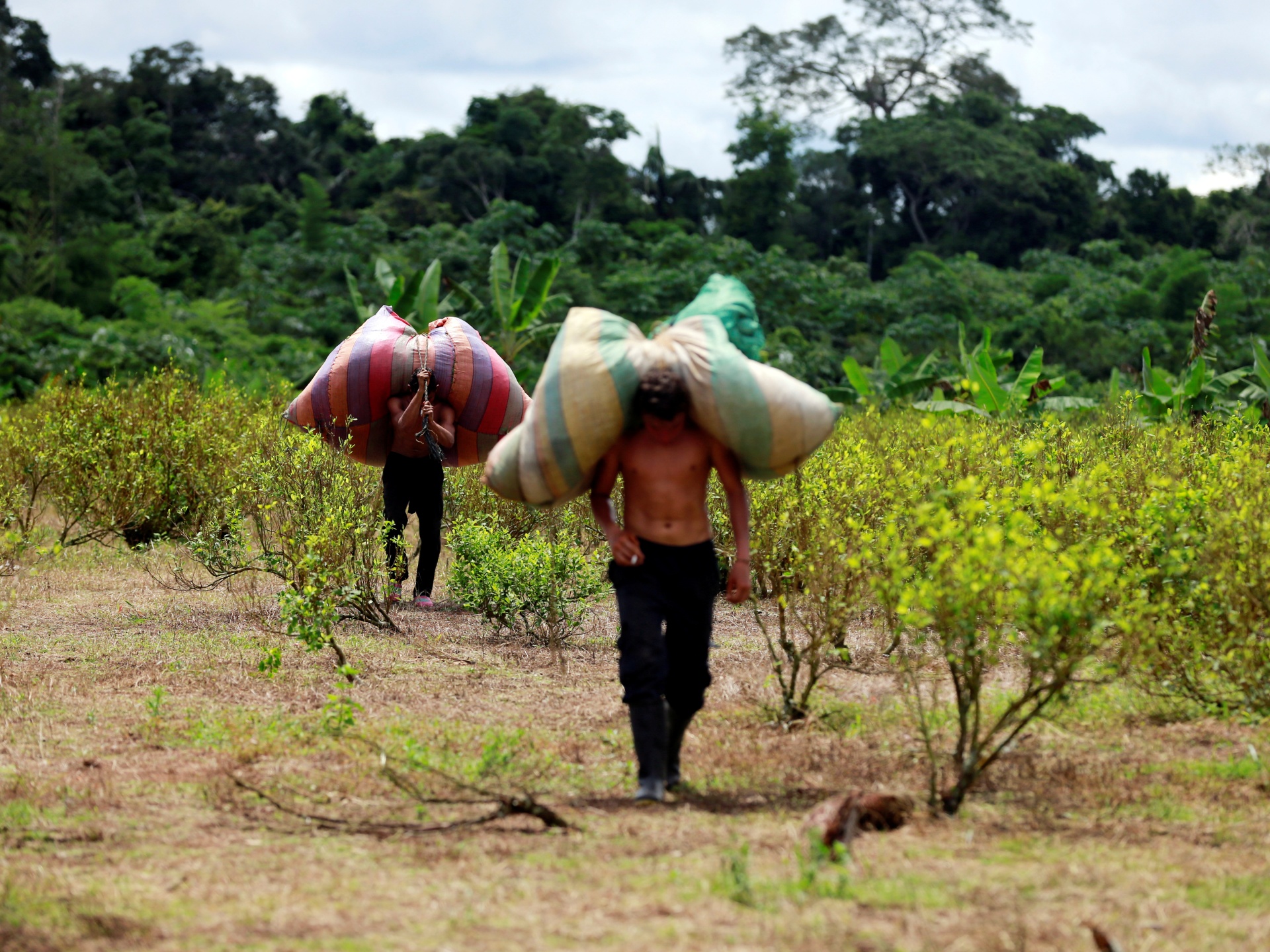Bogot?, Colombia – Farmers in parts of Colombia say sales of coca, the raw ingredient used to make cocaine, have collapsed after a recent surge in production of the illicit drug.
“We’ve seen a complete collapse of buyers,” said Andres Rojas, a coca farmer in the Catatumbo region who advocates for sustainable farming practices among growers. “Entire crops are going unsold, and families are going hungry.”
Colombian President Gustavo Petro has called for solutions to the increasing hunger among impoverished farmers in coca-growing regions [Joshua Collins/Al Jazeera]
Representatives from farming associations in Catatumbo, Nari?o, Cauca and Putumayo, the biggest coca-producing regions in the country, have called the economic fallout of the collapse a “humanitarian emergency”.
Rojas explained that, in recent years, many farmers in Catatumbo abandoned food crops in favour of growing coca, in part because transporting harvests from remote regions to sell in urban centres is cost prohibitive and difficult, given the lack of rural infrastructure.
As a result, many communities are now dependent on the illicit coca economy.
“Rising coca prices in recent years meant many farmers chose to plant coca exclusively,” he said. “This lack of agricultural and economic diversity means the community is even more hard hit [by the drop in prices]. Many people don’t even grow food crops anymore.”
“The absence of coca paste buyers is leading to hunger in coca-growing territories,” President Gustavo Petro acknowledged in a Twitter post on March 22.
He called for the reinstatement of government-led coca-substitution programmes, which would pay farmers coca-growing regions to cultivate alternative crops.
Those programmes were an integral part of Colombia’s 2016 peace accord with the Revolutionary Armed Forces of Colombia (FARC), the country’s largest rebel group at the time.
But when President Ivan Duque came to power in 2018, the government shifted to more aggressive “war on drugs” tactics, rather than pursuing social solutions to coca production.
The coca-substitution programmes were largely stonewalled and even dismantled.
A field of coca has been planted among banana and papaya trees [Joshua Collins/Al Jazeera]
What is causing the price collapse?
Colombia is the largest producer of cocaine in the world, and 2021 was a record year for production.
The United Nations Office on Drugs and Crime (UNODC) estimated that 204,000 hectares (504,095 acres) were dedicated to coca cultivation in 2021, and production has been trending upwards since 2012.
But coca prices began to drop in early 2022, according to Daniel Parra, the border coordinator for the Peace and Reconciliation Foundation (PARES).
“By the end of the year,” he explained, “prices had bottomed out, and buyers for coca paste had become scarce.”
Parra suspects a combination of factors are to blame for the collapse. One may be the fallout from the 2022 arrest and extradition of the drug lord Dairo Antonio Usuga David, who used the moniker “Otoniel“.
Now in the United States, Otoniel pleaded guilty in January to running a criminal enterprise in his role as a leader of the Gaitanista Self-Defence Forces of Colombia (AGC), also known as the Gulf Clan. He also admitted to smuggling “tons of cocaine, perhaps hundreds of tons” into the US.
As Otoniel awaits his prison sentence, Parra said the AGC has started to reorganise, shifting its attention away from the international cocaine trade, resulting in lower demand.
“We think AGC may have begun to focus on other illicit income streams, such as illegal mining, extortion and domestic sales of illicit substances rather than multinational smuggling,” Parra said.
Moving its business away from large-scale cocaine production could help the AGC as it engages in peace talks with Petro’s administration. But it could also be a form of retribution, he added.
“They may also be trying to punish those in the coca industry they view as partly responsible for Otoniel’s capture,” Parra explained.
Mashed, processed coca settles on the bottom of a plastic bottle, forming a paste [File: John Vizcaino/Reuters]
Another key factor in the decline of coca prices could be the rise of other drugs that are less difficult to manufacture. After all, the materials needed for refining coca paste can be easily traced by Colombian security forces, Parra explained.
“Buying large amounts of ammonia, sulfuric acid and sodium permanganate sets off a red flag for law enforcement authorities,” he said. “Some laboratories may be switching to other drugs which are less risky to produce.”
Fentanyl, meanwhile, has “become more popular and may be edging out some cocaine production in illicit markets”.
Rojas, the coca farmer, also pointed to another factor driving down coca prices: violence.
In Catatumbo specifically, large swathes of territory are controlled by the National Liberation Army (ELN), an armed rebel group. And it maintains a monopoly over the sale of coca paste, enforced with violence if necessary.
That allows the ELN to offer substantially lower prices for kilos of coca paste, according to experts. Nowadays, the group is offering “less than half” of what it was paying a year ago, Rojas said. “And the buyers no longer come to us. We have to go to them and hope they are buying at all.”
Competition has also risen as cocaine production expands regionally in South America, according to the UNODC.
Coca cultivation in Peru surged 30.6 percent to 76,158 hectares (188,191 acres) in 2021. And Bolivia, whose government ended its cooperation with the US Drug Enforcement Agency in November, saw the cultivation of coca increase 4 percent to 30,500 hectares (75,367 acres) that same year.
Coca production has increased in countries like Peru, heightening competition in the region among farmers [File: Gabriel Stargardter/Reuters]
The search for solutions
Experts and coca growers have welcomed the current president’s calls to reimplement crop-substitution programmes and invest in alternative economic opportunities for coca farmers.
But nevertheless, “there is a lack of faith that the government will fulfill its promises,” Rojas said.
“The government needs to show that it has the will, and the ability, to live up to its promises,” said Gimena S?nchez-Garzoli, Andes director for the Washington Office on Latin America (WOLA).
She explained that most farmers who signed up for previous crop-substitution programmes were left in the lurch, when they eradicated their coca crops on the promise of government payments that never arrived.
“Petro needs to show that his administration can go from rhetoric to implementation,” she said.
Rojas himself has seen how alternative crops can prosper. While his coca yields have fallen in value, his food harvests are becoming more profitable. With so few local farmers producing fruits and vegetables, most of the region’s fresh food is imported.
“We may have to grow platano instead of coca,” he said, referring to a type of banana crop. In the long run, he concluded, a coca-dependent economy is simply not sustainable.
“We aren’t drug lords,” he said. “We are the rural poor. We are farmers. We are the bottom of the pyramid in this industry. And our community needs to diversify agricultural production to survive.”
“But as long as the government refuses to encourage the development of other options, this dependence will continue.”










